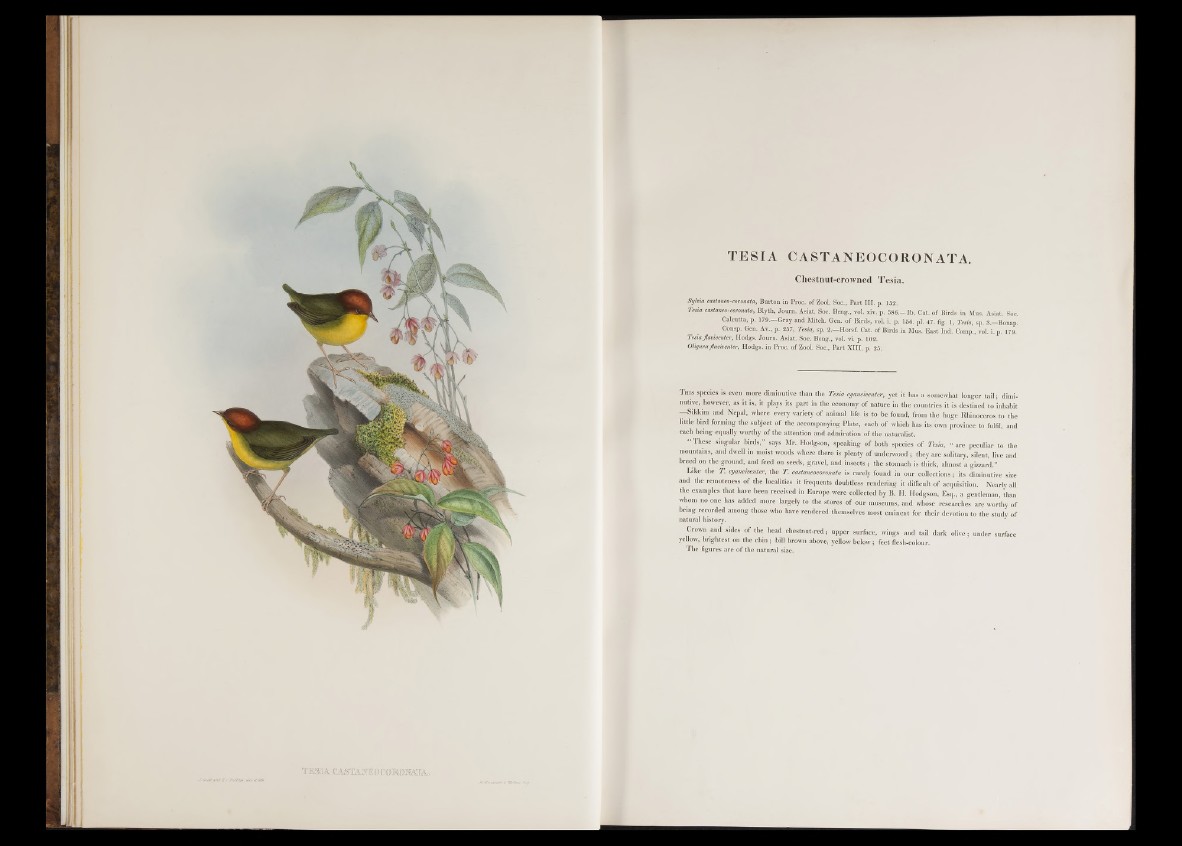
TESIA CASTANEOCORONATA.
Chestnut-crowned Tesia.
Sylvia castmeo-coronata, Burton in Proc. of Zool. Soc., Part III. p. 152.
Tesia castqmorcgrmata, Myth, Jottm. Asiat. Soo. Beng., igjixiv, p. 586.—Ib. Cat. of Birds in Mus. Asiat. Soc.
Calcutta, p. 179— Gray and Mitch. Gen. of Birds, vol. i. p. 156. pi. 47. fig. 1, Tesia, sp. 8—Bonap.
Consp. Gen. Ay.,, p. 267, Tesia, sp. 2— Horsf. Cat. of Birds in Mus. Bast Ind. Comp., vol. i. p. 179.
Tesia flaviventer, Hodgs. Journ. Asiat Soc. Beng., vol. vi. p. 102.
Oligvra flaviventer, Hodgs. in Proc. of Zool. Soc., Part XIII. p. 25.
T h is species is even more diminutive than the Tesia cyaneiventer, yet it has a somewhat longer ta il; diminutive,
however, as it is, it plays its part in the economy of nature in the countries it is destined to inhabit
—Sikkim and Nepal, where every variety of animal life is to be found, from the hnge Rhinoceros to the
little bird forming the subject o f the accompanying Plate, each of which has its'own province to fulfil, and
each being equally worthy of the attention and admiration of the naturalist.
“ These singular birds,” says Mr. Hodgson, speaking o f hpth species o f Tesia, “ are peculiar to the
mountains, and dw|Jl in moist woods where there ispih|aty o f underwood; they are solitary, silent, live and
breed on the ground, and feed on seeds, gravel, and insects ; the stomach is thick, almost a gizzard.”
Like the T. cyaneiventer, the T. caslaaeoanmta is rarely found in our collections; its diminutive size
and the remoteness of the localities it frequents doubtless rendering it difficult o f acquisition. Nearly all
the examples that have been received in Europe were collected by B. H. Hodgson, Esq., a gentleman, than
whom no one has added more largely to the stores of our museums, and whose researches are worthy of
being recorded among those who have rendered themselves most eminent for their devotion to the study of
natural history.
Crown and sides of the head chestnut-red; upper surface, wings and tail dark olive; under surface
yellow, brightest on the chin; bill brown above, yellow below; feet flesh-colour.
The figures are of the natural size.